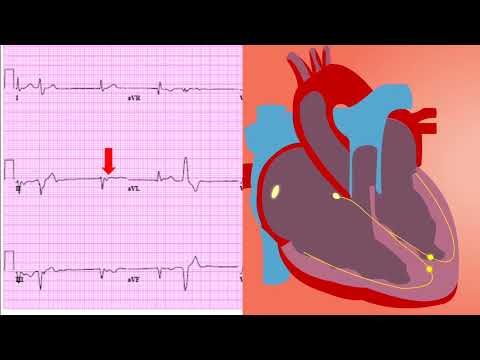🎬 Video Summary
This 3D medical animation video provides a comprehensive overview of atrial flutter. Learn about the underlying causes, recognizable signs and symptoms, and various diagnostic techniques used to identify atrial flutter. The video also explores the different treatment options available, offering valuable insights for medical professionals and anyone seeking to understand this heart condition.
🧠 Teaching Pearls
- Understand the causes and mechanisms behind atrial flutter development.
- Learn how to recognize the characteristic signs and symptoms of atrial flutter.
- Identify key ECG features used in the diagnosis of atrial flutter.
- Explore the various treatment options available, including medical and interventional approaches.
- Gain insights into the diagnostic workup for atrial flutter using 3D medical animation.
❓ Frequently Asked Questions
Q: What is atrial flutter?
A: Atrial flutter is a type of abnormal heart rhythm (arrhythmia) caused by a re-entrant circuit in the atria, leading to a rapid and regular atrial rate.
Q: What are the symptoms of atrial flutter?
A: Symptoms can include palpitations, shortness of breath, fatigue, chest pain, and lightheadedness. Some individuals may not experience any symptoms.
Q: How is atrial flutter diagnosed?
A: Atrial flutter is typically diagnosed using an electrocardiogram (ECG), which can reveal the characteristic “flutter waves.”
Q: What are the treatment options for atrial flutter?
A: Treatment options include medications to control heart rate or rhythm, cardioversion to restore a normal rhythm, and catheter ablation to eliminate the re-entrant circuit.
Q: Is atrial flutter dangerous?
A: Atrial flutter can increase the risk of stroke and heart failure if left untreated. Prompt diagnosis and management are important.
Q: What causes atrial flutter?
A: Atrial flutter can be caused by underlying heart conditions, high blood pressure, lung disease, thyroid problems, or excessive alcohol consumption.
🧠 Key Takeaways
- 💡 Atrial flutter is a common arrhythmia characterized by rapid atrial rates.
- 💡 ECG findings are crucial for diagnosing atrial flutter.
- 💡 Treatment options range from medications to catheter ablation.
- 💡 Understanding the underlying causes can help prevent future episodes.
- 💡 Recognize the symptoms and seek prompt medical attention if suspected.
🔍 SEO Keywords
Atrial Flutter, Heart Arrhythmia, ECG Features, Treatment Options, Cardiac Ablation, Heart Rhythm, Palpitations.
“`

